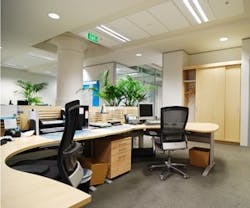The Future of Work
Anticipating change is the art of looking over horizons and making educated guesses. For the designer or architect, it means spotting trends and understanding shifting dynamics. In designing for the office environment, it means recognizing how the very nature of work continues to change.
A recent report, Working Environments of the Future, suggested that office space will increasingly reflect life in the home. The report found that, in much the same way that people move around their own homes to do different things, such as eat in the dining room or watch TV in the living room, offices also needed to offer variety.
Another report agrees. The Distributed Workplace summarized the findings of a 2-year study into the future of the office and found that the Information Age has exposed the inadequacies of traditional ways of working. It concluded also that there’s likely to be a blurring between working and living because technology has rendered obsolete the concept of the workplace as the only place to work.
Instead, the report concluded, in an age when people can work from anywhere, the office will become valued more for its “social and cultural role” rather than a place simply to work. With more people teleworking from home, the office will become an extension of our homes, and vice versa, with wireless technologies affording new horizons of possibility.
Those technologies will continue to evolve. For Microsoft, for example, its vision of the future is to have interlinked flat-panel screens with e-mail on one screen, documents on another, and video on a third, with software that allows files to be dragged and dropped between screens and programs.
IBM has its own version of the future – a wall display consisting of cells arranged in a grid to create a display measuring about 8 feet by 8 feet. The display is created by rear-projecting the output of 12 ThinkPads onto one screen.
While technology will continue to be the biggest influence on how we work, some of the changes it has brought about in the office are subtle. For example, in an age of shared texts and e-mail, it now means that we don’t need to talk to one another. We expect instant communication with groups of workmates and that, in turn, influences our sense of private and public space.
Better understanding the dynamics of the changing office – understanding the roles of color and texture, and how interior designers and architects are integrating workstations and conference and breakout areas in new ways – and, in practical terms, how the home and the office are becoming extensions of one another.
Using soft or accent colors is a relatively simple, cost-effective way to improve the overall feel of an office, but which can also profoundly influence how people function within that space. It’s about putting people at the heart of the design process, using light and color – on the ceilings, floors, and walls – to influence attitude, motivation, creativity, and productivity.
Courtesy of Desso
